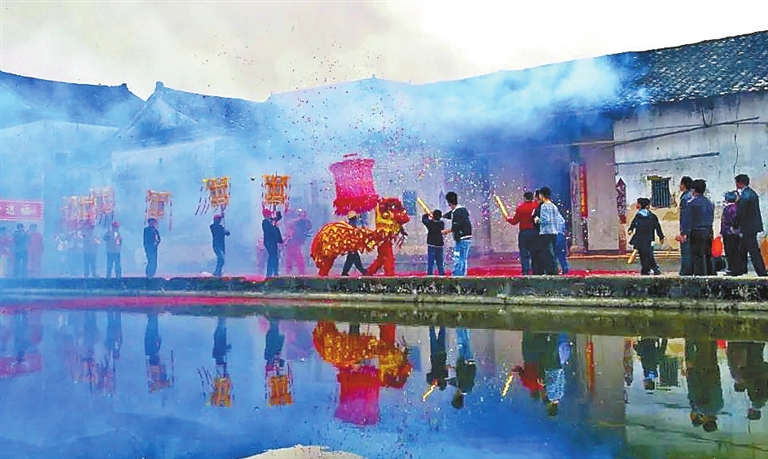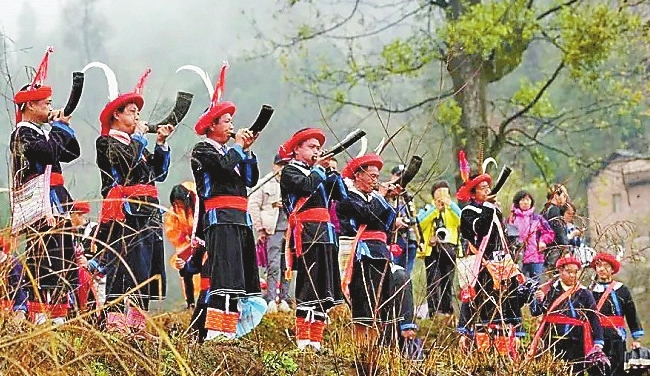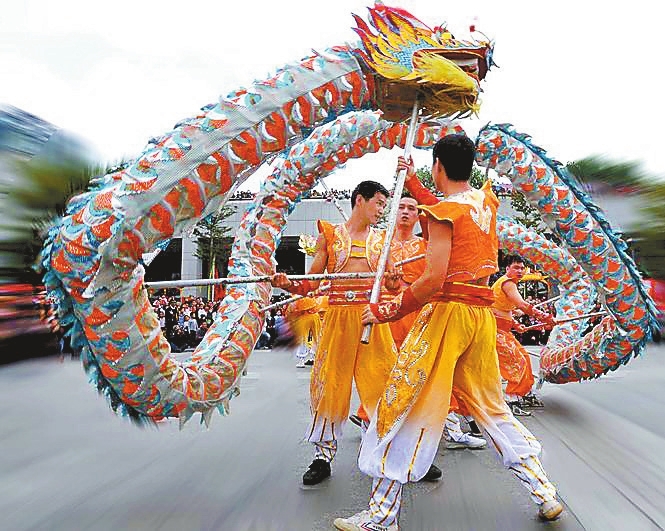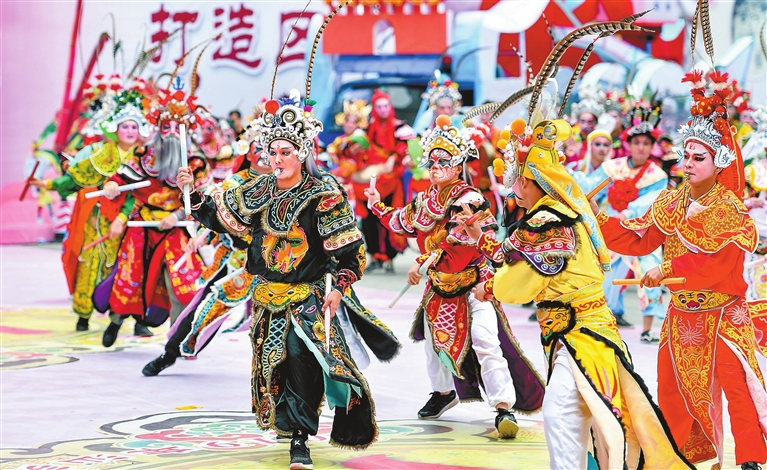



THERE is no place like home, and there is no festival like the Chinese New Year. Also known as Lunar New Year or Spring Festival, it is the most important festival in China and a major event in some other East Asian countries. Spring Festival, which will fall on Saturday, Feb. 10, is a time to honor deities and ancestors, feast, and visit family members. Cities around Guangdong Province have planned for celebrations to honor this special occasion, and if you happen to travel to these places during the holiday, there is opportunity to experience the festival in an authentic Cantonese style. Dragon dances in Huizhou Adjacent to Shenzhen, the city of Huizhou offers refreshing sceneries in Luofu and Nankun mountains, West Lake, Xunliao Bay, and Pinghai Ancient Town. The city, where Hakka, Cantonese, and Chaoshan cultures converge, is also a treasure trove to experience folk traditions such as lion and dragon dances. On the evening of Feb. 23, a free gala will be offered at the northern plaza of the Huizhou Olympic Stadium, with folk artists from China performing dragon dances and other gigs. Then, on Feb. 24, about 15 teams of dragon dancers will join a parade that proceeds from the stadium, through Huizhou Bridge to Yuantong Bridge. The parade will stop at Chaojing Gate and Pinghu Gate for live performances. Temple fair in Shenzhen A temple fair will be held on Feb. 24 at Shiji Plaza in Longhua District, offering booths selling crafts and showcasing folk arts, live lion dance performances, and costume parades. Visitors are also invited to participate in interactive games with small gifts for winners. Folk culture carnival in Foshan Foshan, an ancient city in the west of the Pearl River Delta, gained its name from the three Buddha statues unearthed in this area in the Tang Dynasty (618-907). In addition to such tourist destinations as Xiqiao Mountain, Foshan Ancestral Temple, and Qinghui Garden, the city is known for its ceramics, martial arts (the hometown of Bruce Lee) and Cantonese opera. In the lead-up to the Chinese New Year, a lantern fair will light up the area around Foshan Ancestral Temple, featuring light installations in the shape of various dragons in homage to the lunar Year of the Dragon. There will also be floral markets on Songfeng and Yudai roads, near Chinese Ceramics City and in Wenhua Park. Visitors can buy flowers and festive decorations, as well as try local snacks. During the Lantern Festival on Feb. 24 and the following day, you can join local families in their time-honored tradition of walking across Tongji Bridge. The bridge, first built in the Ming Dynasty (1368-1644) out of wood and stone, has been rebuilt multiple times and now spans 32 meters long and 9.9 meters wide. At each end, the stone railings are adorned with auspicious cloud patterns, bats, and pinwheels, which symbolize good luck. Locals believe that “after crossing Tongji Bridge, your troubles will go away!” They cross the bridge holding pinwheels, bells, and lettuce, from north to south, wishing for a smooth and prosperous year. On Feb. 25, a gala featuring martial arts performances, lion and dragon dances, and other folk performances will be held at Foshan Creative Industrial Park in Chancheng District. An art museum on the third floor of Walkin Star, a shopping complex, has prepared experiences for families with children. They can learn to make paper-cutting, ceramics, wood prints, try the basic moves of dragon and lion dances in costumes, and prepare dumplings, Cantonese desserts, and congee. The museum charges an entrance fee of 128 yuan (US$17.8) per adult and 88 yuan per child. Lanterns and music in Heyuan Between Feb. 18 and 21, a lantern carnival will be held in Zhongxin Township, Lianping County, during which awards will be given to elaborate handcrafted lanterns. A concert and song and dance gala will also be given, while visitors can enjoy the lantern display and try to solve riddles during interactive games. Folk cultural experiences in Zhaoqing Zhaoqing, located in central west Guangdong Province, is believed to be the cradle of ancient civilization in South China. The city offers such serene natural sceneries as the Seven Star Crags, a string of limestone hills along the shore of the beautiful Star Lake, and Dinghu Mountain, a forest park lush with plants. Spring Festival is certainly a time to explore the city’s cultural landscape too. Between Feb. 23 and 25, a series of events will be offered at the Memorial Temple of Lord Bao, who was a minister of the Northern Song Dynasty (960- 1127) and known as an upholder of justice. People have deified and built temples to pay homage to Bao throughout China, believing in his power to bring justice and blessings. The temple in Zhaoqing, covering 11,500 square meters, consists of buildings imitating the Song-Dynasty style such as memorial halls, bell towers, drum towers, pavilions, and corridors. The events will include a lion dance competition, a Cantonese standup comedy, a parade, a folk culture fair, riddle-solving games, and a hanfu (traditional Chinese costumes) photography contest. Glades festival in Qingyuan Qingyuan, located in northern Guangdong, is known for its natural sceneries such as Beijiang River and the high peaks of Nanling Mountains. Its appeal also lies in the diverse folk culture represented by the ethnic Yao people who traditionally inhabit the mountainous regions. Between Feb. 10 and 12, a glades festival, also known as the Yao people’s Valentine’s, will be observed in the outdoors of Youling Village, Liannan County. Young locals will sing and dance to express their yearning for love; even the married people are allowed to confide in their old flames on this special occasion. Tourists can also experience such traditional feats as archery and a drum dance. Yingge dance in Puning Puning in the Chaoshan area of Guangdong has been previously known for its garment industry, tea, Chinese herbal medicines, and fruits. The list has been expanded to include Yingge dance in recent years. Yingge dance, literally translating to “a hero’s song,” is a folk art form that combines opera, dance, and martial arts. It originated from the Ming Dynasty and is performed during traditional Chinese festivals. On Feb. 11 and 12, visitors can observe a parade and performance presented by four Yingge dance teams, a lion dance ensemble, and a Chaozhou gong and drum team. The parade will start at the southern gate of Minghua Stadium, with stops and live performances in five downtown areas. (Li Dan) | 
